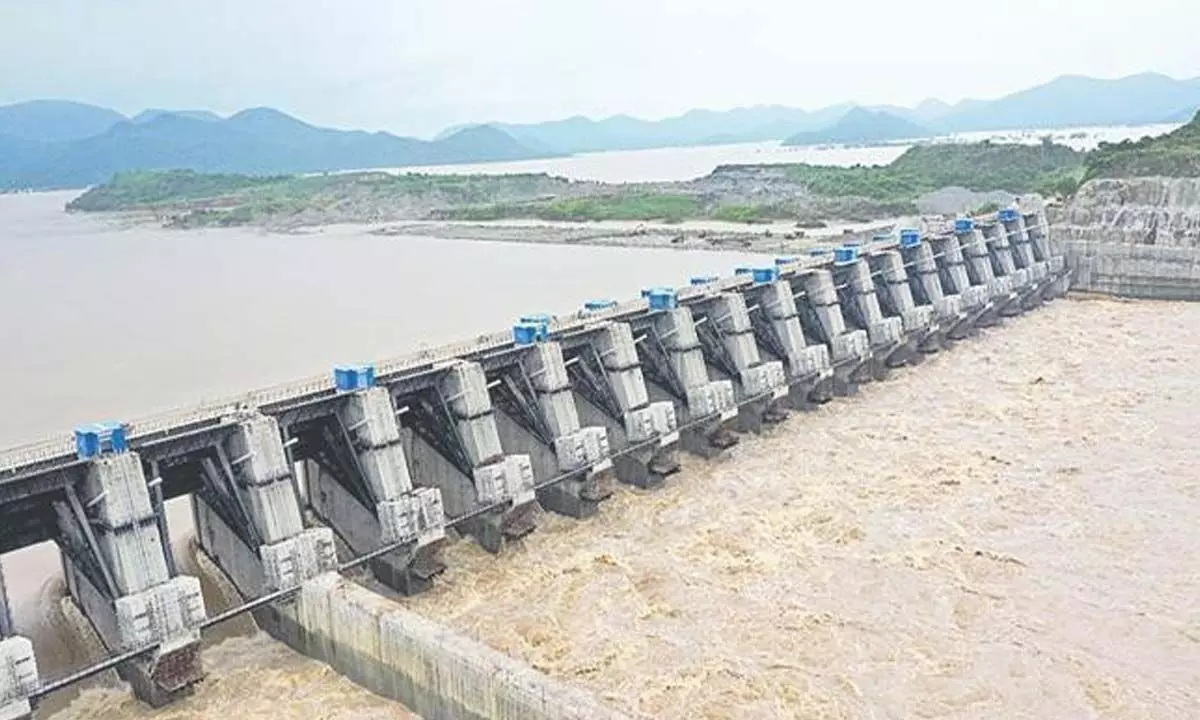Live
- Aid group resumes activities at famine-hit camp in Sudan
- Kishan Reddy Vows to End BRS and Congress Influence in Telangana, Criticizes CM's Governance
- Punjab bypolls: Bittu twisting words for political gains, says Congress nominee
- Punjab CM to administer oath to over 10,000 sarpanches on Friday
- BJP Core Committee Plans Protests Against State Government’s Failures
- Mulugu Collector Divakar's Facebook Hacked Again, Cyber Criminals Send Fraudulent Messages Asking for Money
- The Role of Genetics in Obesity: Can Metabolic Bariatric Surgery Help?
- Deputy CM Bhatti Vikramarka's Visit to Khammam District: Lays Foundation for Road Works Worth Rs. 8.9 Crore
- ED Files Charge Sheet in Agrigold Case, Attaches Assets Worth Over ₹4,100 Crores
- Mushfiqur Rahim ruled out of Afghanistan ODIs with finger fracture
Just In
Damn the big projects, say aggrieved oustees


Polavaram project
Polavaram project is all right, but what about the skewed rehabilitation policies?
It is not that major irrigation projects should not be executed, but they should be carriedout with the least amount of distress to the betterment of existing living pattern and standards of locals.
Resettlement and rehabilitation policies and practices in regard tothe project-affected families in Andhra Pradesh have been unpredictable and have actually become retrograde since 1980s, moreso, in undertaking major irrigation projects of Polavaram magnitude. It is sad.
The persevering problem has been the threat of Polavaram project, directly displacing about 1.2 lakh people, mostly Adivasis. Roughly, a million people are affected by the project.Studying the past trends, reviewing the present policies and planning for future betterment of the people affected and protecting environment to maintain ecological balance should be accorded top priority now.
During the Nizam period, hearteningly, fair re-settlement facilities were provided to the households displaced by the Nizam Sagar project executed during 1925-31. A little over 13,000 people were shifted to neatly built re-settlement centres and were given land for land compensation besides cash grants to buy agricultural implements etc. The Tungabhadra Dam construction, which was started by the then Madras Province in 1947, displaced the inhabitants of 65 hamlets. A resettlement process was takenup well before the project work commenced. All farmers including tenants were provided land in the command area. Every family was given a constructed house. The declared motto was that the living condition must improve,not deteriorate, after the re-habilitation.
One wishes that things improved in post-independence, but actually, they deteriorated.
Beginning with the Nagarjuna Sagar project(1957-1969), the R&R package was diluted in a way. And the idea of bettering the lot of land oustees was eschewed. Landowners were compensated with lands in diminishing ratios of the extent they owned – earlier subject to a ceiling of 12.5 acres. With the start of Sriram Sagar project in 1964, what was called a modified re-habilitation policy lowered the benefits to the displaced persons still further. Those of the oustees, who were moved to the rehabilitation centers, were given two acres of wet land or four acres of dry land. These who moved away on their own were given cash compensation ranging from Rs 500 to Rs 2,000. A drastic change for the worse occurred in the policy by the time the phase-II of this project commenced in 1978. Following the recommendation of the project chief engineer, the idea of rehabilitation centres was given a go-by altogether. Only cash compensation and ex-gratia payment was provided subject to a maximum of Rs 1,000 per family who had lost land or house, and Rs 5,000 per family who had lost both. A dehumanisingapproach, indeed!
Similar is the case with the Srisailam project (1971-1981). There was a wide gap between the compensation that was due and what was realised, besides a class differentiation in the process. While the large and medium landowners could get 65 percent of the compensation due to them, the landless could get only 5 to 6 percent compensation they were entitled to.
So is the case with a few other projects. In the case of Manair dam, the landless poor numbering 3,162 persons were not paid any ex-gratia amount. Under Singoor project (1989), the land oustees had to move from pillar to post. As much as 61 percent of the eligible families did not receive compensation at all. Partial compensation was realised by the remaining 39 percent.
Disappointingly, those who owned lands previously could acquire lands to the extent of only 30 percent of what they owned earlier under all the projects.The annoying feature in all these major projects, which are formulated after a lot of spade work and careful calculations of cost benefit analysis is thatmany parameters remain uncertain, giving rise to a spate of speculations and controversies over the costs and the benefits. This points to the utter lack of precision while chalking out the project implementation process.
Whoever is visiting Polavaram dam site, they are talking about superior technology in construction of diaphragm wall,spillways and concrete structures and dam as a whole. However, shockingly, as per the latest survey, 35 dam failures have been reported in so far as dam safety is concerned. Reportedly, change of designs and other engineering parameters is effected without involving riparian states, which is again and again leading to litigation from Odisha and Chhattisgarh governments. In the case of Sabarl and Paleru tributaries to what extent backwaters are going to spread, the data has not arrived at yet.
No one is seriously bothered about re-settlement measures undertaken so far. That permanent damage is being caused to local tribals and other project-affected families is a mute question. What about public opinion exercises carriedout so far, as objected to by the project-affected neighbouring states that are still subjected to the outcome of the judicial review in the Supreme Court of India. People's voice is yet to be heard largely.
(Writer is the Convener of Visakha Human Rights Society)

© 2024 Hyderabad Media House Limited/The Hans India. All rights reserved. Powered by hocalwire.com






